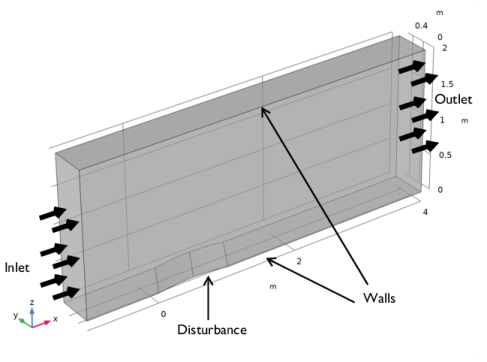
|

|
1
|
|
2
|
In the Select Physics tree, select Fluid Flow>High Mach Number Flow>High Mach Number Flow, Laminar (hmnf).
|
|
3
|
Click Add.
|
|
4
|
Click
|
|
5
|
|
6
|
Click
|
|
1
|
|
2
|
|
1
|
|
2
|
|
3
|
|
4
|
|
5
|
|
6
|
|
1
|
|
2
|
|
3
|
|
1
|
|
2
|
|
3
|
|
4
|
|
5
|
|
6
|
|
1
|
|
2
|
|
4
|
Click to expand the Displacements section. In the table, enter the following settings:
|
|
5
|
|
1
|
|
2
|
|
3
|
|
4
|
|
5
|
Select the object ext1 only (the cylinder)
|
|
6
|
|
7
|
|
1
|
|
2
|
In the Show More Options dialog box, in the tree, select the check box for the node Physics>Advanced Physics Options.
|
|
3
|
Click OK.
|
|
4
|
In the Model Builder window, expand the View 3 node, then click Component 1 (comp1)>High Mach Number Flow, Laminar (hmnf).
|
|
5
|
In the Settings window for High Mach Number Flow, Laminar, click to expand the Advanced Settings section.
|
|
6
|
|
1
|
In the Model Builder window, under Component 1 (comp1)>High Mach Number Flow, Laminar (hmnf) click Fluid 1.
|
|
2
|
|
3
|
|
4
|
Locate the Thermodynamics section. From the Rs list, choose User defined. In the associated text field, type Rs.
|
|
5
|
|
6
|
|
7
|
Locate the Dynamic Viscosity section. From the μ list, choose User defined. In the associated text field, type 1e-8.
|
|
1
|
|
2
|
|
3
|
|
1
|
|
2
|
|
3
|
Specify the u vector as
|
|
4
|
|
5
|
|
1
|
|
1
|
|
3
|
|
4
|
|
5
|
|
6
|
|
7
|
|
1
|
|
3
|
|
4
|
|
1
|
|
2
|
|
1
|
|
2
|
|
3
|
|
4
|
|
1
|
|
2
|
|
3
|
In the Model Builder window, expand the Study 1>Solver Configurations>Solution 1 (sol1)>Stationary Solver 1 node, then click Fully Coupled 1.
|
|
4
|
|
5
|
|
6
|
|
1
|
|
2
|
|
3
|
|
1
|
|
2
|
|
1
|
|
2
|
|
3
|
|
1
|
|
2
|
|
3
|
|
4
|
|
5
|
|
6
|
|
1
|
|
1
|
|
2
|
|
1
|
|
2
|
|
3
|